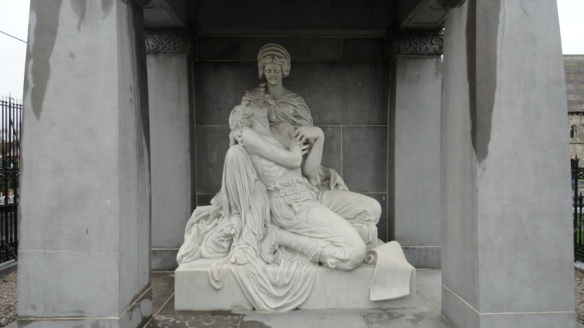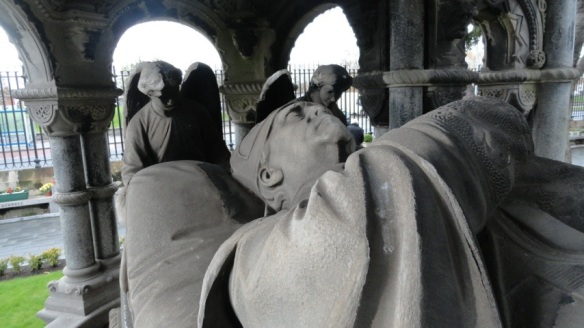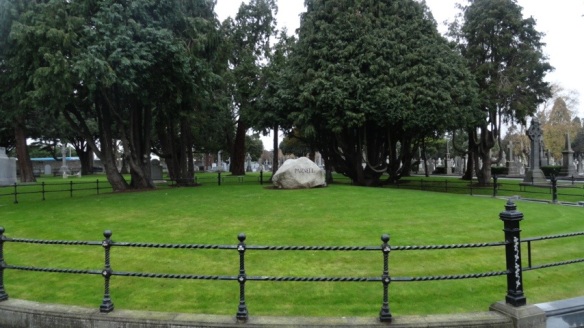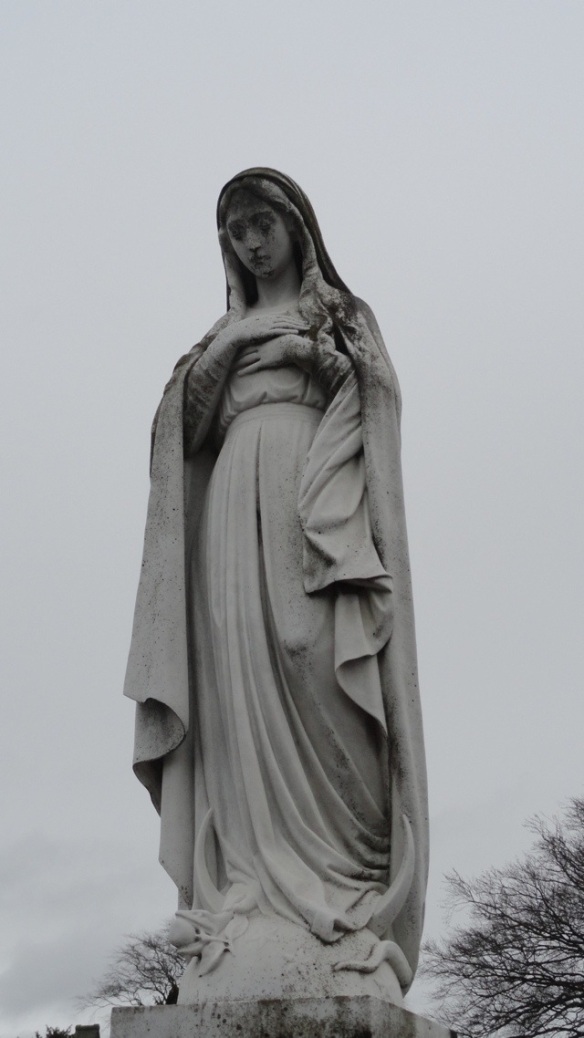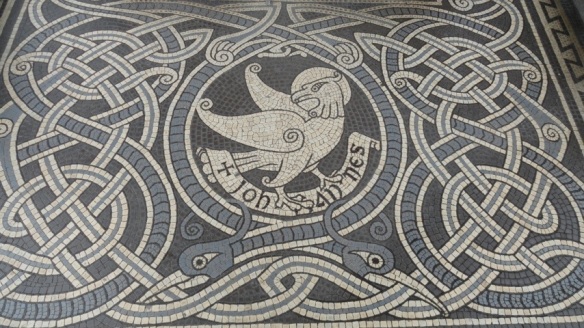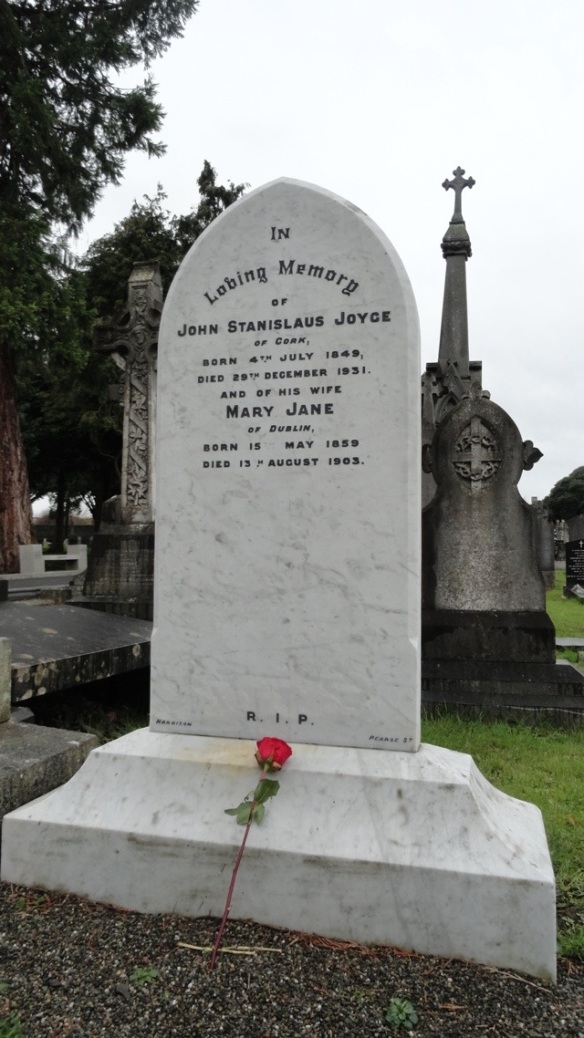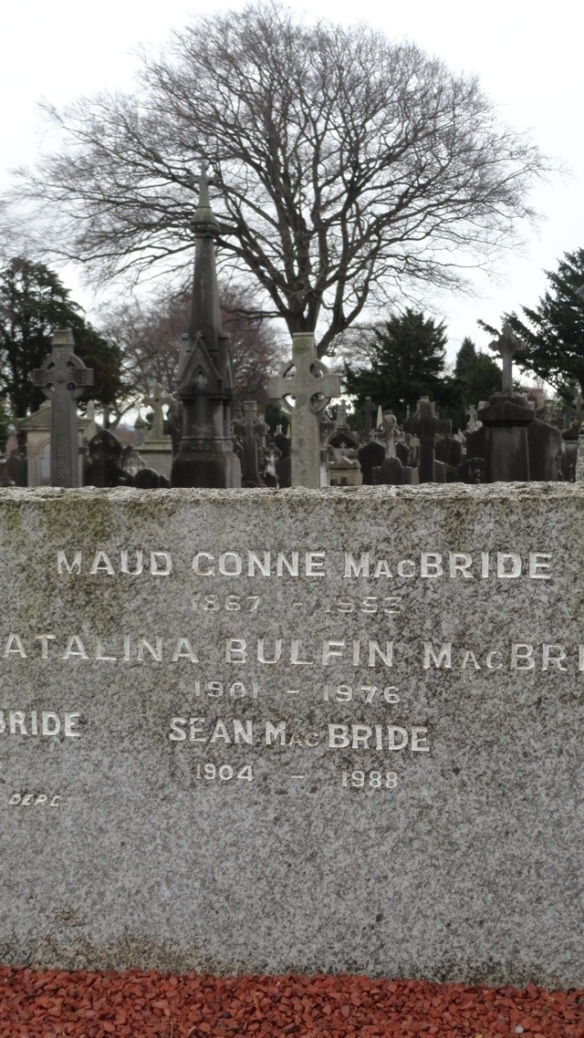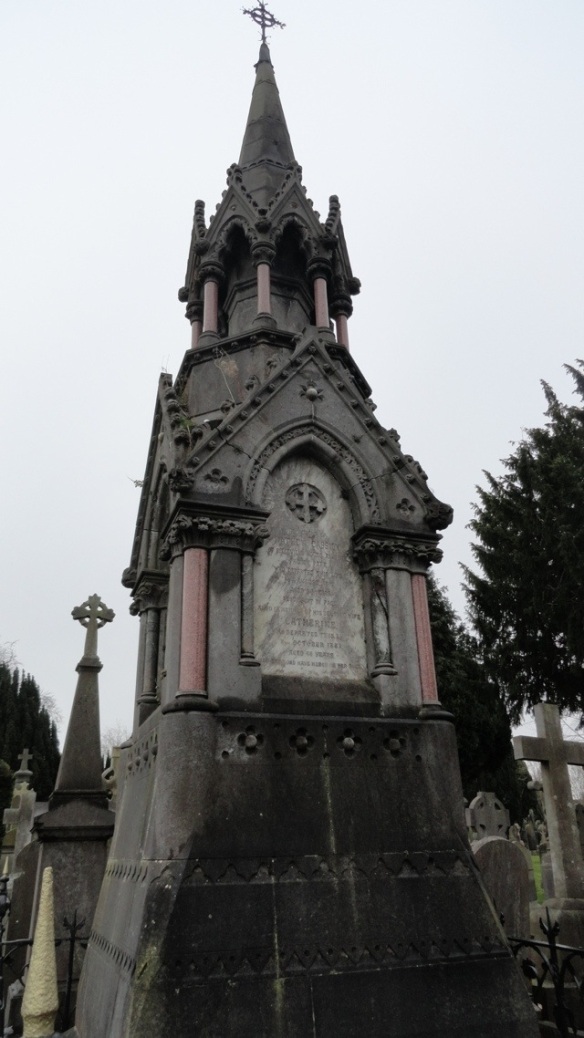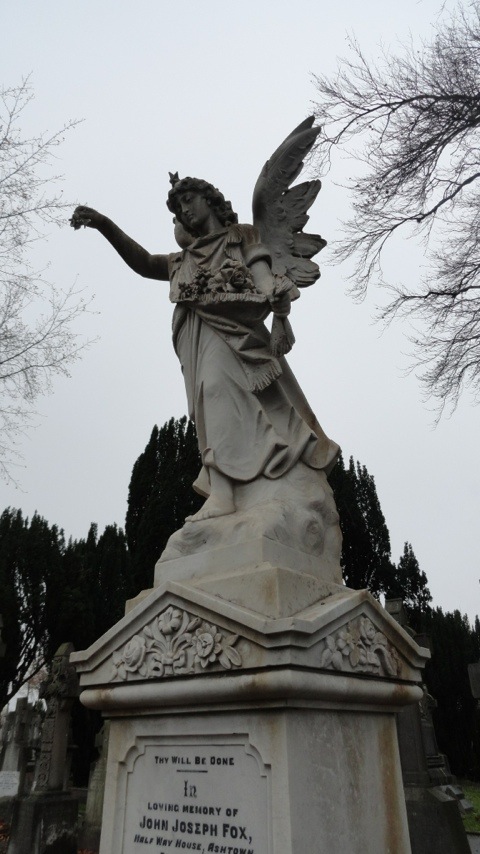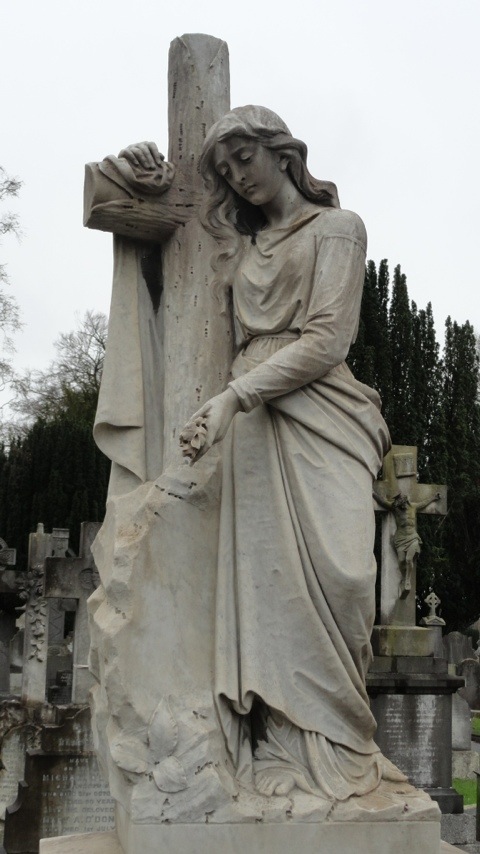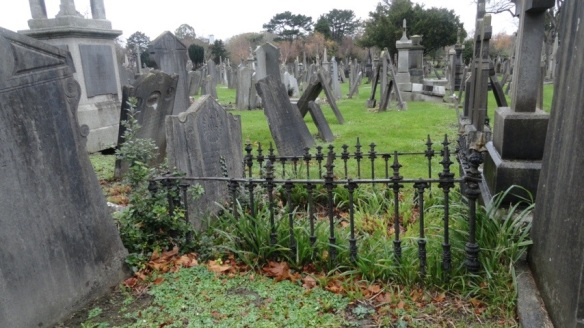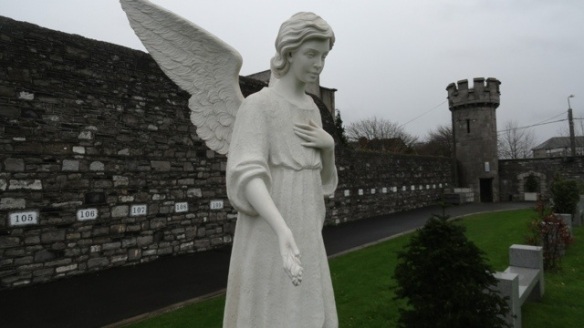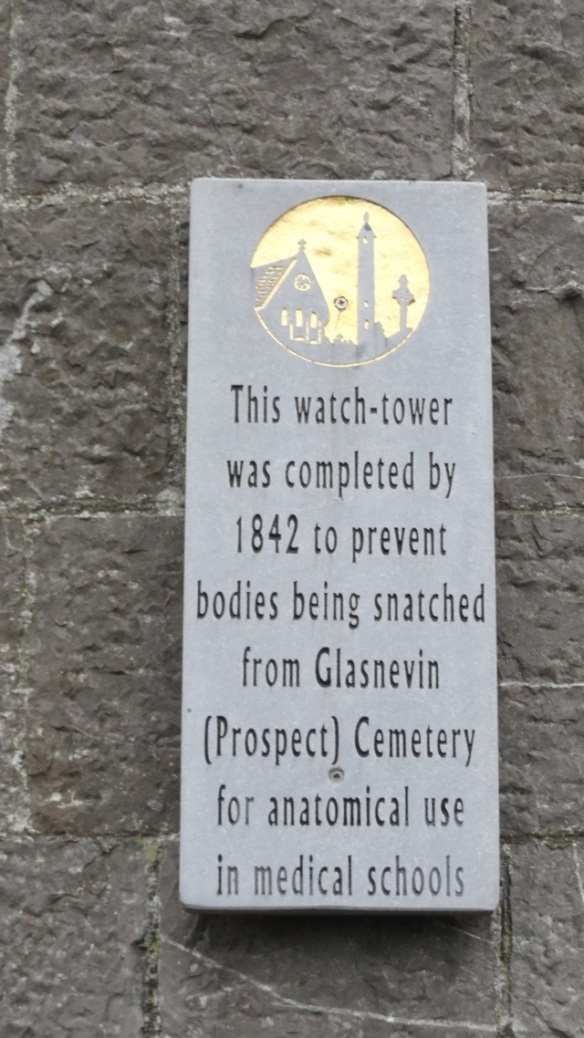Note: I took lots of photos but these will have to get added at a later date due to connection difficulties.
Update: photos have arrived!
We took a Guided tour about Glasnevin cemetary today, and i had the treat of visiting my first ever funerary-themed museum. Downstairs from the visitor centre, it is small but full of interactive exhibits, several exemplary of new techniques of history-making that I had learned about at uni (such as a looping audio ‘display’ of gravediggers’ anecdotes). Read an intriguing snippet about the first, and likewise oldest, modern cemetary in Europe, the Père Lachaise Cemetery, which I’ll be sure to visit when we’re in Paris.
Glasnevin has a sunken ring of tombs similar to those grouped around the main tree in Highgate, except these doors were all uniformly plain black, and had varyingly impressive monuments erected in stone in the grass above each. Our guide Bridget had a terrific memory, and informed us of dozens of prominent rippers and the dates and connections of the movements of which they were a part. I think my favorite was Maude Gonne, a handsome feminist and revolutionary, best known for being the object of William Butler Yeats frustrated affections. Apparently he proposed to her on several occasions and was refused. What a woman!* During the tour and much to my amusement, we were followed around by a teenaged work experience student called “Nile” (that’s how it was pronounced) who was tall and silent, with pale skin and oily black hair, and reminded me more than a little of the ill-fated coroner’s assistant in True Blood.
The cemetery was founded by Daniel O’Connel, and like Highgate had its early days in the Victorian. It was O’Connel’s vision that it be open to those of all faith or none. This in itself was unusual: I suppose at the time all other graveyards would have been attached to specific institutions of worship and therefore strictly managed by the authority of each. Mr O’Connel also wanted the yard to be open to the poor, who mightn’t be able to afford a burial otherwise. Especially in the Victorian age, britain was obsessed with death and the higher classes, said our guide, planned for their funeral with all the care and detail -enthusiasm even- that nowadays is put into a wedding. These aspects of Glasnevin are not exactly unique: relatively cheap plots were made available at Highgate, but the grounds were divided into only two areas: the greater area for Anglicans, and the other reserved for Dissenters.
At Glasnevin, we were shown the “cholera pit,” the swollen grave of hundreds of thousands of victims of the disease. Cholera broke out during hard times when literally a hundred people would live in each of the tall Georgian townhouses; three or four families to a room, without clean water. The most poignant part of all came toward the end of the two-hour tour, when we stopped outside the Angels’ Corner. This was a large grassy square in one end of the cemetery, without any stones at all, aside from sitting benches and carved angels standing around the outside. In nineteenth century Ireland stillborns were buried under many ditches and hedges: they were not usually allowed to be buried in consecrated ground. If you’ve read Tess of the D’Urbervilles, or maybe Neil Gaiman’s Graveyard Book, you might remember the concept of consecrated ground. Glasnevin provided infant burials free of charge, and were happy to it in consecrated ground at that. The man in the family would ride their bike to the grounds and hand a shoebox over the counter, and at the end of the day they’d all the little boxes would be buried and someone would say a prayer.
On a less somber note, I found out that columbarium comes from the Latin for dove’s honeycombed homes, and that the day the first grave was dug at Glasvenin, the owner of the home nearest the gate thought to his’self: I’ll need to get a liquor license. “The Gravediggers’” has been open ever sinceand, and is now run by his seventh generation descendant. A few years later the authorities introduced a law that all interments must take place before half-twelve, so as jobs wouldn’t get left half done. The pub also presented the opportunity for body-snatchers to ply their trade, as apparently elsewhere they got away with extracting their prize and walking them out, arm over shoulder like a drunk friend. According to Glasnevin records, not a single grave was ever interfered with here though. Eight towers and specially trained bloodhounds let loose each night saw to that.
Was freezing by the time the tour was over; desperate for a coffee, but the cafe was morbidly expensive. So we scuffled home, arm in arm against the chill, with the giddy humor and high spirits of hypothermia. I am writing now in the brick-arched crypt-like basement of the hostel, in a corner full of mismatched-era upholstered armchairs, like a mad hatter suite. Naturally the fire in the grill is not only a gas powered fake, but broken. On a side note, I began reading Oscar Wilde on the way here, I’ve been sucked in by Hemingway’s “deceptive simplicity” instead, and really wishing that I was living in Paris in the twenties, with Ezra, Joyce, Fitzgerald, Eliot, and all the rest of the “Generation Perdue”.
I can tell you, though, that I’m glad to have not been here (in Dublin) in the twenties. The prosperous periods seem to have been decades apart, and the history of republicanism is very one step forward, two steps back. They are rightly proud if their achievement of freedom and the centuries of thriving culture that preceded English occupation, but even now the austerity measures are all over the tv, and on the face of every Dubliner. Still, they’ve had a more than their fair share of man-loving writers, poets and revolutionaries, and I’ll always love them for that.
